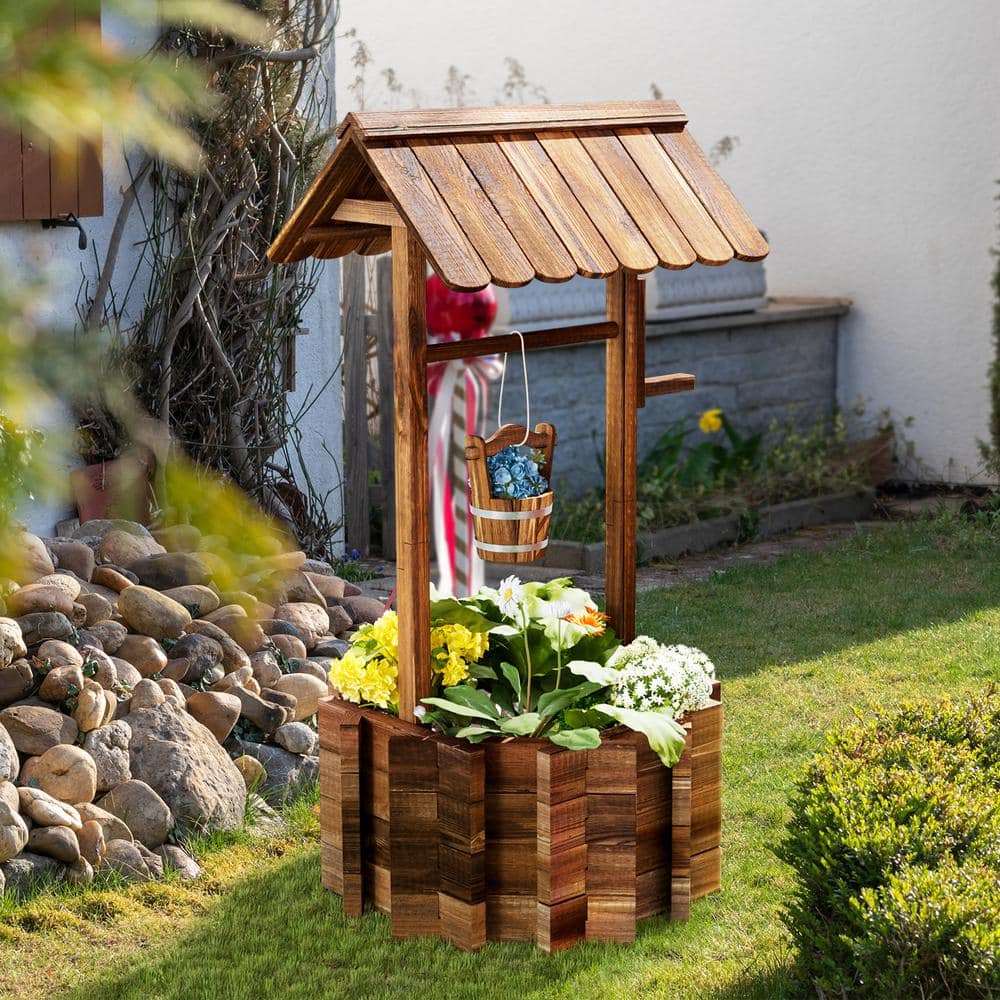Introduction to Decorative Wishing Wells
Decorative wishing wells are enchantingly whimsical garden features, combining beauty and functionality. Not only do they serve as a charming focal point in your outdoor space, but they also evoke nostalgia and a sense of wonder. In this article, we will dive deep into the world of decorative wishing wells, exploring their types, advantages, design ideas, and personal experiences to inspire you.
What is a Decorative Wishing Well?
A decorative wishing well is an ornamental structure designed to resemble an old-fashioned well, often featuring a roof and a bucket. Traditionally, these wells symbolize hope, dreams, and wishes, providing a charming narrative to any garden.
Types of Decorative Wishing Wells
There are several styles of decorative wishing wells, each offering unique aesthetics for your garden.
1. Classic Wooden Wishing Wells
Classic wooden wishing wells evoke a rustic vibe and are often crafted from treated wood for durability. These are perfect for country-style gardens.
2. Modern Decorative Wishing Wells
For a contemporary look, modern decorative wishing wells made from metal or resin can provide a sleek design, fitting into urban landscapes.
3. Themed Wishing Wells
Themed wishing wells, such as fairy tale or holiday designs, can add a fun twist to your garden, appealing to families and children.
| Type | Material | Durability | Style | Price Range |
|---|---|---|---|---|
| Classic Wooden | Wood | High | Rustic | $100 – $400 |
| Modern Decorative | Metal/Resin | Very High | Contemporary | $150 – $500 |
| Themed Wishing Wells | Varied | Medium | Whimsical | $50 – $300 |
Benefits of Adding a Wishing Well to Your Garden
Incorporating a decorative wishing well into your garden design carries numerous advantages:
1. Visual Appeal
A wishing well serves as an eye-catching centerpiece that draws attention and adds character to your garden.
2. Symbolism and Meaning
Wishing wells have a rich history of symbolism, representing dreams and aspirations, making them meaningful additions.
3. Water Conservation
Some wishing wells can be converted into rainwater collection systems, offering both aesthetics and functionality.
Pros and Cons of Decorative Wishing Wells
- Pros:
- Enhances garden aesthetics
- Adds a whimsical element
- Can serve as a functional garden feature
- Cons:
- Higher initial investment
- Requires maintenance to preserve appearance
- Space-consuming in smaller gardens

Ideas for Decorating Your Wishing Well
Once you have chosen your wishing well, it’s time to make it uniquely yours! Here are some creative decorating ideas:
1. Flowers and Plants
Surround your wishing well with vibrant flowers or climbing vines to integrate it beautifully within your garden landscape.
2. Fairy Lights
Add fairy lights around the well or inside it to create a magical atmosphere in the evening.
3. Seasonal Decorations
Change decorations according to the seasons. For example, use pumpkins in fall and ornaments during winter for festive flair.
Maintaining Your Decorative Wishing Well
Regular maintenance is essential to keep your wishing well looking its best. Here’s a guide to maintaining your decorative wishing well:
1. Regular Cleaning
At least twice a year, scrub the exterior with mild soap and water to remove dirt and mildew.
2. Repairs and Touch-ups
Check for any signs of wear or damage. Repaint or re-stain wooden wells to protect them from the elements.

Where to Buy Decorative Wishing Wells
Finding the perfect decorative wishing well can be a fun adventure! Here are some top places to shop:
1. Local Garden Centers
Visiting garden centers allows you to see the wells in person and assess their quality.
2. Online Retailers
Websites like Amazon, Wayfair, and Etsy offer a variety of styles and prices, often with customer reviews to guide your choice.
3. DIY Options
If you’re feeling crafty, consider building your own wishing well! Many DIY tutorials are available online to guide you through the process.
Personal Experience: My Journey with a Decorative Wishing Well
When I decided to add a wishing well to my garden, I was unsure where to start. After some research, I chose a beautiful wooden design that perfectly matched my backyard aesthetics. The installation process was straightforward, and I delighted in decorating it with seasonal flowers and solar fairy lights. The well has become not only a conversation starter for visitors but also a special spot where my family gathers to share wishes and dreams.

Frequently Asked Questions (FAQs)
1. What is the cost of a decorative wishing well?
The price of a decorative wishing well ranges from $50 for simpler designs to over $500 for more elaborate versions. It depends largely on the material, size, and intricacy of the design.
2. Can I use a wishing well indoors?
While traditionally used outdoors, smaller wishing wells can be used creatively as decorative items within the house, perhaps as a plant stand or storage for garden tools.

3. How do I decorate my wishing well for different seasons?
To decorate for different seasons, you can simply change the plants, add seasonal décor items like wreaths or ornaments, and incorporate seasonal colors that fit the mood.
4. Are wishing wells functional?
While primarily decorative, some wishing wells can be designed to collect rainwater or serve as planters, adding a level of functionality to their charm.
